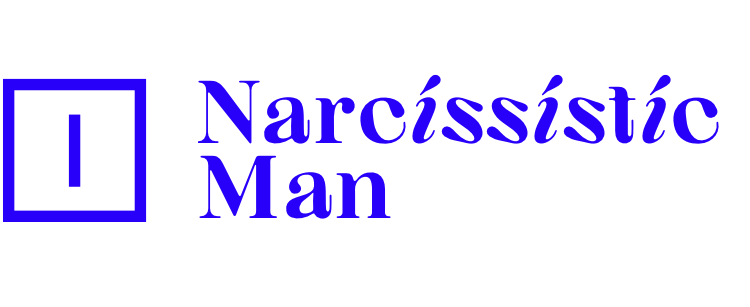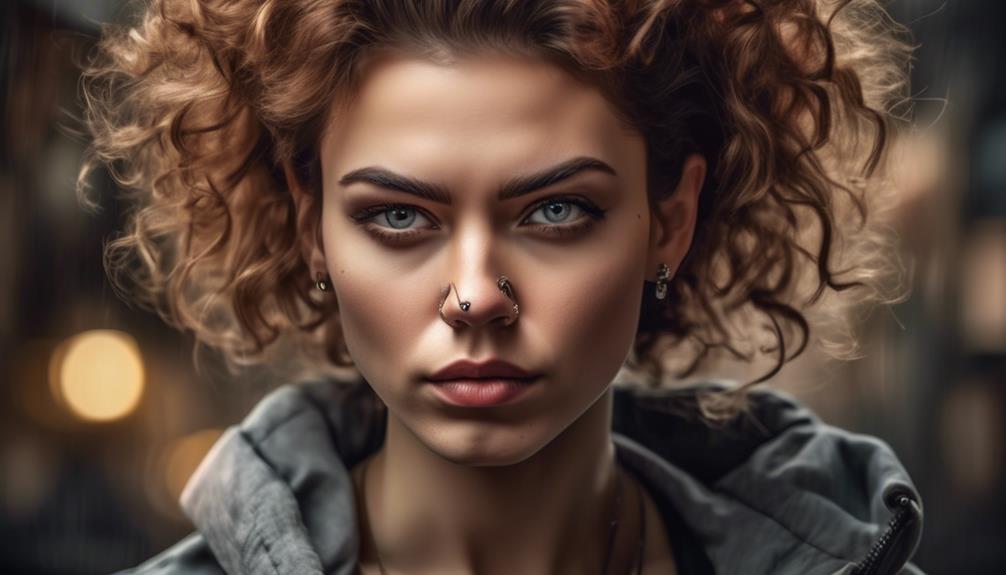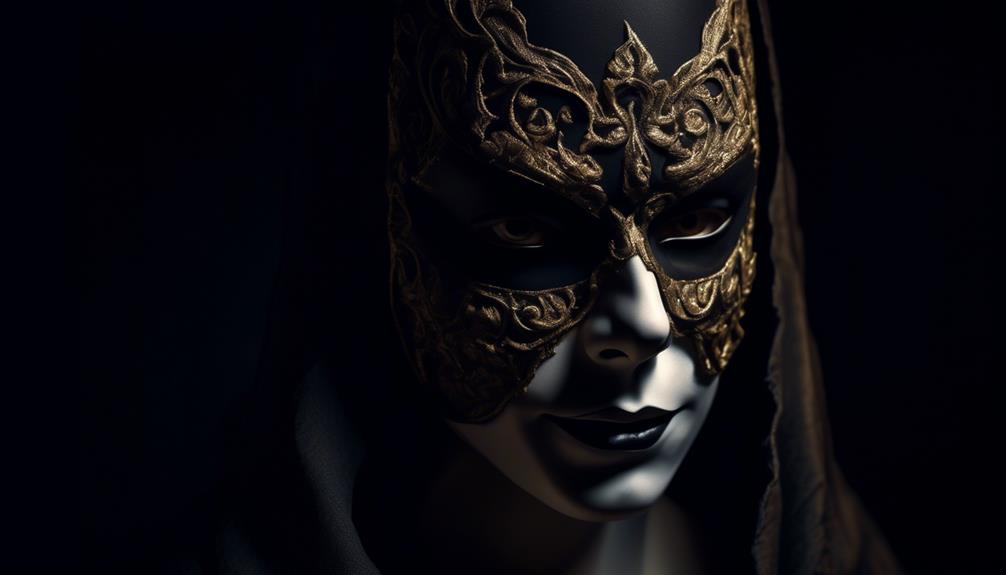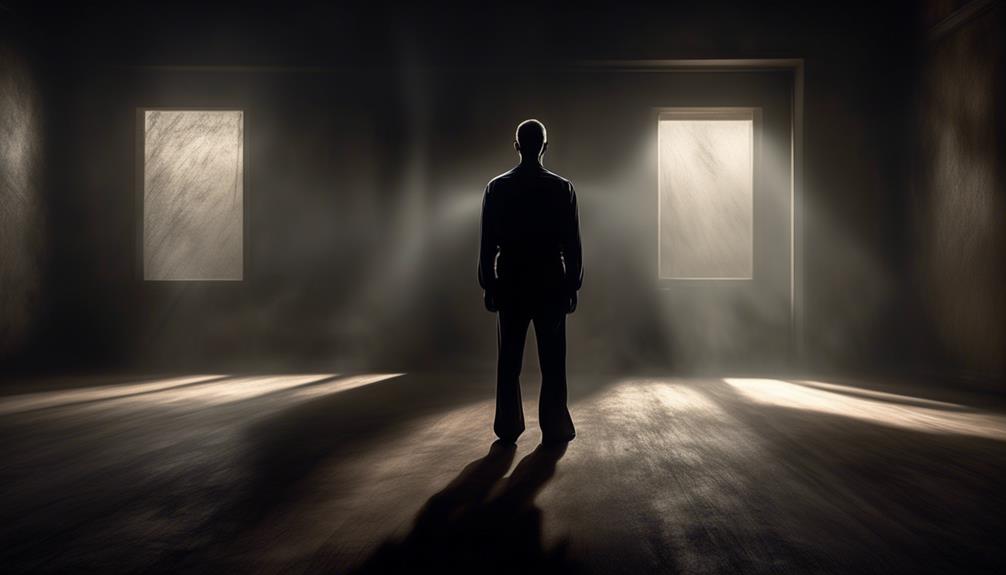Navigating the intricate world of human connections, identifying concealed narcissists can be likened to unraveling a mysterious puzzle. Their facial expressions, resembling carefully crafted masks, obscure a multitude of hidden intentions and emotions.
But what lies beneath these subtle smiles and fleeting glances? Understanding these covert narcissistic facial expressions is crucial in unraveling the complexities of their manipulative behavior and safeguarding ourselves from their psychological games.
Key Takeaways
- Fake smiles lack warmth and authenticity, with tension evident in facial muscles.
- Trust intuition and hone observation skills to read subtle facial cues for authenticity.
- Microexpressions reveal true emotions and serve as indicators of deception and emotional concealment.
- The 'Superior' Gaze is used by covert narcissists to assert power and control over others.
Recognizing Fake Smiles
Recognizing fake smiles in covert narcissists often requires keen observation skills and a discerning eye for subtle facial cues. When dealing with individuals with narcissistic personality disorder, it's crucial to pay attention to their facial expressions to spot signs of insincerity.
Covert narcissists may wear smiles that fail to reach their eyes, lacking the warmth and authenticity typically associated with genuine joy. These fake smiles may appear forced, with underlying tension evident in the muscles of their face. As they attempt to manipulate and control others, covert narcissists might quickly switch from a superficial smile back to a neutral or disdainful expression.
Trusting our intuition is key in identifying these artificial displays of emotion; if something feels off or unnatural about their smile, it likely is. By honing our ability to read these subtle facial cues, we can better navigate interactions with covert narcissists and protect ourselves from their manipulative behaviors.
Microexpressions and Deception
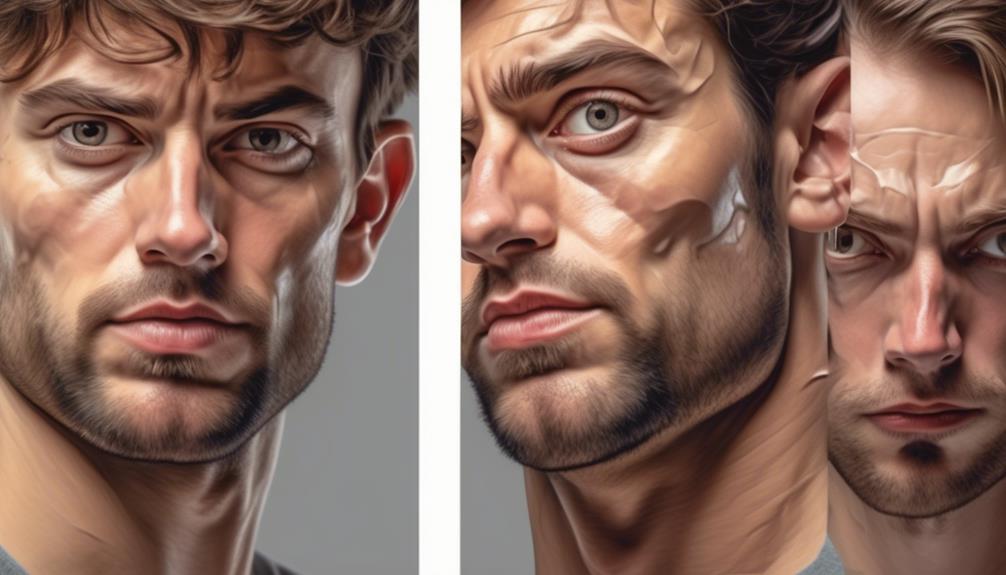
Microexpressions, fleeting and involuntary facial expressions that betray true emotions, serve as powerful indicators of deception and emotional concealment. When dealing with individuals exhibiting traits of a narcissistic personality, understanding microexpressions becomes crucial in deciphering their true intentions.
Covert narcissists, known for their judgmental behavior and tendency to maintain a facade of superiority, may rely on deception to manipulate situations to their advantage. These individuals, often struggling with mental health and personality issues, may use microexpressions to conceal their true emotions and intentions.
The 'Superior' Gaze
In understanding the deceptive tactics of individuals with narcissistic traits, particularly covert narcissists, one notable facial expression that reveals their need for dominance and superiority is the 'Superior' Gaze. This expression is a key indicator of the covert narcissist's attempt to assert power and control over others through non-verbal cues. When faced with the 'Superior' Gaze, people may experience feelings of inadequacy and inferiority due to the intense judgment and condescension conveyed by the narcissist's facial features.
Key Points:
- The 'Superior' Gaze is characterized by raised eyebrows, narrowed eyes, and a slight smirk, creating a look of disdain and superiority.
- Covert narcissists use the 'Superior' Gaze as a manipulative tactic to intimidate and belittle others, reinforcing their perceived dominance.
- Recognizing the 'Superior' Gaze can help individuals identify covert narcissists and protect themselves from falling prey to their controlling behaviors.
Masking True Emotions

Covert narcissists strategically conceal their genuine emotions behind deceptive facial expressions, portraying a facade that misleads others about their inner feelings. Recent research published on covert narcissist facial expressions sheds light on how these individuals manipulate their facial cues to mask true emotions.
These individuals often exhibit insincere smiles or pleasant expressions even when experiencing anger or upset emotions. The ability to mask true emotions is a common trait related to narcissistic behavior, where the individual aims to deceive and manipulate others through their facial expressions.
By projecting a false image of themselves, covert narcissists maintain control and power over their interactions. It's crucial to look beyond just facial expressions and consider other behavioral cues to accurately gauge a covert narcissist's genuine emotions.
Understanding the mechanisms behind masking true emotions can help in identifying and dealing with covert narcissists effectively.
Controlling Eye Contact
Using intense and prolonged eye contact, individuals with narcissistic tendencies assert dominance and manipulate interactions to maintain control over others. Covert narcissists often employ controlling eye contact as a tool to make you feel uncomfortable and submissive. This tactic can be unsettling for a lot of people, leading them to question their own thoughts and opinions.
Additionally, maintaining strong eye contact can be a way for covert narcissists to stay away from genuine connections and prevent others from expressing themselves freely. It's crucial to recognize these behaviors, as controlling eye contact is a common strategy used by narcissists to manipulate conversations and undermine the confidence of those they interact with.
Frequently Asked Questions
What Hurts a Covert Narcissist the Most?
When a covert narcissist feels hurt, it's often due to a perceived threat to their sense of superiority or control. Rejection, criticism, or betrayal can deeply wound their fragile ego, leading to feelings of shame and humiliation.
Not receiving the attention, recognition, or appreciation they believe they deserve can also be significant sources of pain for them. These emotional blows can erode their self-esteem and trigger defensive behaviors to protect their fragile self-image.
What Upsets Covert Narcissist?
Criticism, rejection, and challenges to their superiority deeply upset covert narcissists. Their low tolerance for imperfection and entitlement make them react defensively and aggressively when their self-image is threatened. Any deviation from their expectations or exposure of their manipulation tactics can lead to anger and upset.
Understanding these triggers is crucial in managing interactions with covert narcissists and avoiding unnecessary conflict.
How Do Covert Narcissists Talk?
We communicate in a way that can be manipulative, often using subtle tactics to control and influence others. Our speech is characterized by a mix of charm and criticism, making it difficult for others to pinpoint our true intentions.
We may employ passive-aggressive comments, sarcasm, or condescension to assert dominance and superiority. Our words are carefully chosen to maintain power and ensure others fulfill our desires without question.
Can You Spot a Narcissist Facial Features?
We can often spot a narcissist through their facial features, as they may exhibit expressions of contempt like smirking or eye-rolling. These subtle cues can hint at their sense of entitlement and superiority.
It's essential to pay attention to these nonverbal signals, as they can reveal underlying narcissistic traits. By observing these facial expressions, we can gain insight into the narcissist's mindset and behaviors.
What Do Covert Narcissist Facial Expressions Reveal About Their Behavior on Social Media?
When examining covert narcissists social media behaviors, their facial expressions can reveal their true intentions. Often, they portray a false sense of humility and concern, but their smirks or raised eyebrows can hint at their underlying arrogance and self-importance. It’s essential to pay attention to these subtle cues when interacting online.
Conclusion
In conclusion, understanding covert narcissistic facial expressions can help us navigate social interactions with greater insight and awareness.
By recognizing the subtle cues and manipulative tactics hidden behind fake smiles and superior gazes, we can protect ourselves from falling victim to their deceptive behavior.
It's important to stay vigilant and trust our instincts when faced with individuals who may be using facial expressions to mask their true intentions.
